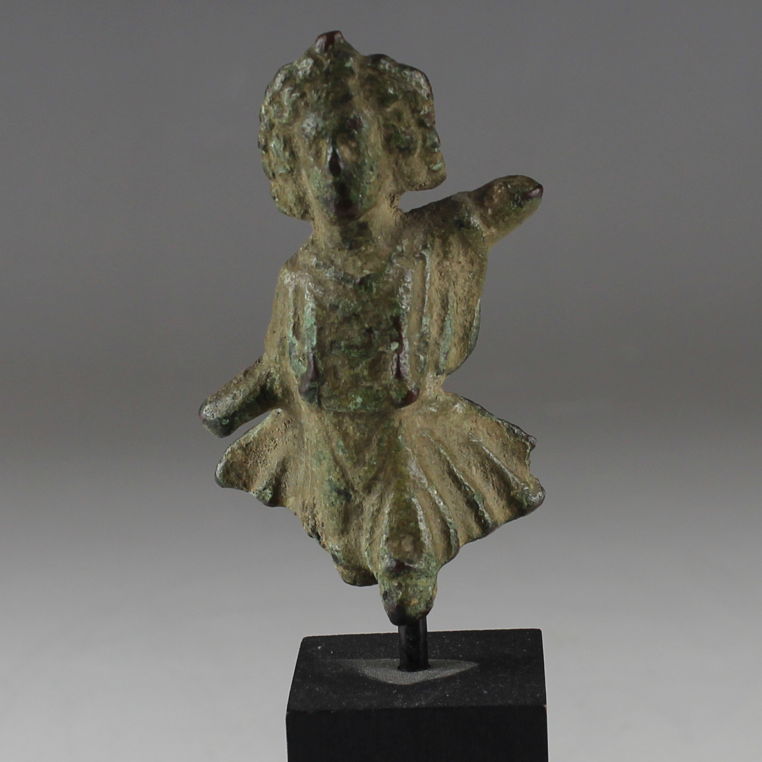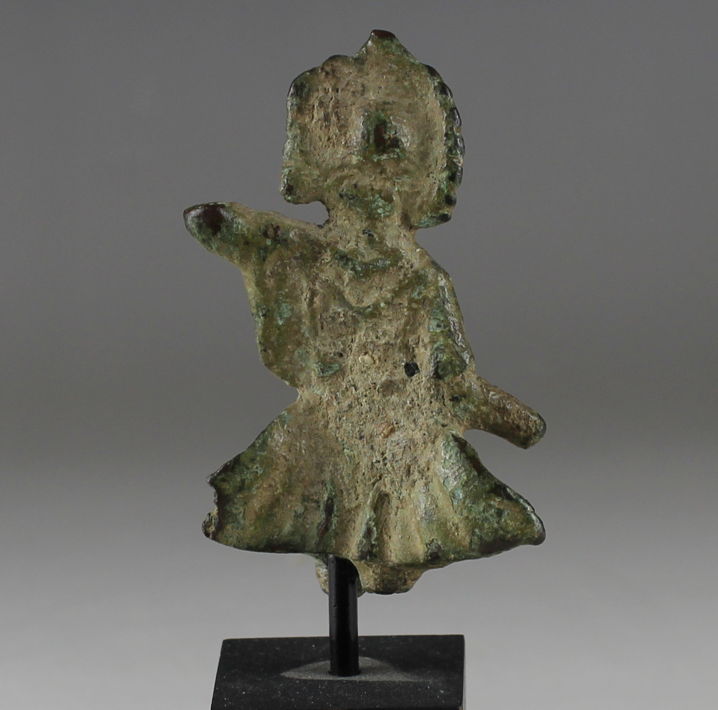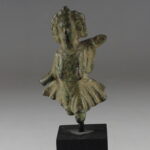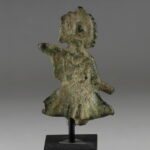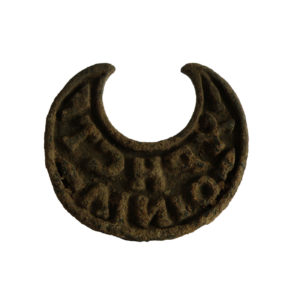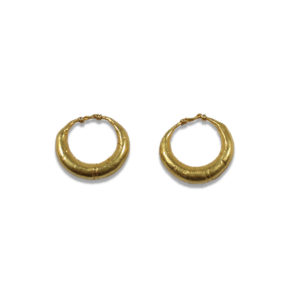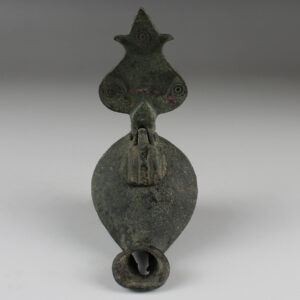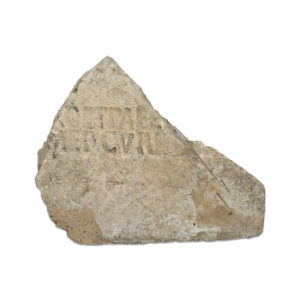Description
| ITEM | Statuette of a Lar |
| MATERIAL | Bronze |
| CULTURE | Roman |
| PERIOD | 2nd – 3rd Century A.D |
| DIMENSIONS | 60 mm x 35 mm (without stand) |
| CONDITION | Good condition. Includes stand |
| PROVENANCE | Ex Joseph Klein collection, New York, acquired between 1941 – 1980 |
The Roman statuette of a Lar represents one of the most common household deities in ancient Roman religion. Lares were protective spirits of the home and family, often associated with ancestors or local spirits of the land. Typically, these statuettes were placed in a family’s lararium, a small household shrine, and were central to daily rituals that invoked protection and prosperity. The figure of a Lar is usually depicted as a youthful male wearing a short tunic, often holding a cornucopia or a drinking horn, symbolizing abundance and well-being.
The worship of Lares highlights the importance of household and domestic religion in Roman life. While grand public rituals took place in temples, the veneration of Lares was a personal, intimate practice carried out by individual families. The presence of these statuettes in Roman homes reflects a deep belief in the divine influence on everyday life and the desire to maintain harmony and protection within the household. The rituals often involved offerings of food, wine, or incense, emphasizing the reciprocal relationship between the family and the protecting spirits.
These statuettes also reveal insights into Roman art and craftsmanship. Usually made of bronze, but sometimes of terracotta or other materials, the statuettes are finely detailed despite their small size, showcasing the skill of Roman artisans. The Lar statuettes are not just religious artifacts but also representations of Roman social values, emphasizing the importance of family, tradition, and continuity.


